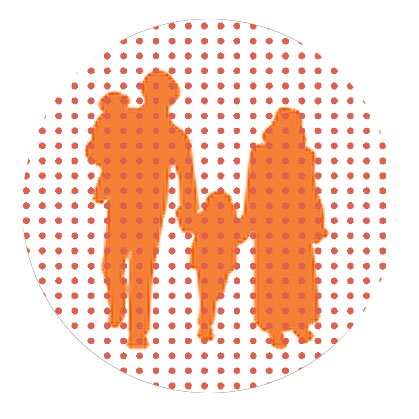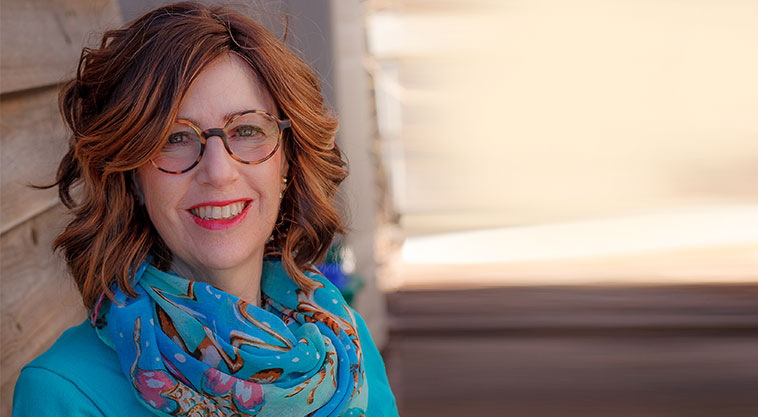I’m Here For You

When your children are distressed, give them the greatest gift — your support

"When you were a child, who was there for you when you were in distress?” is a question that many therapists ask their clients.
Many clients respond that no one was there to support them emotionally. Although they may have had parents and siblings, grandparents, aunts, uncles, cousins, friends, teachers, rebbeim, and mentors, no one was really there for them — at least they saw it that way — and they had to stuff their pain away.
The most mildly affected numbed their feelings and lost touch with themselves. Others ate their troubles away. Some starved themselves so as not to feel anything. Some turned to substances, obsessions, or distractions. Some became depressed, anxious, or angry as they tried to cope with feelings that could not be expressed or released. Others somatized, turning emotion into physical pain and illness: headaches, stomach issues, and weakened immune systems. Unprocessed emotions can wreak havoc on a person’s life.
Childhood Challenges
Interestingly, trauma isn’t necessary in order to experience the strong negative effect of lack of support. Regular childhood struggles can also cause suppression of emotions if no one was there to support the child.
“My daughter is in 5th grade. I know this is a socially challenging year for many girls. But Breindy was always a popular girl so I never anticipated that she would experience any of the typical problems. When she burst into the house crying on a Shabbos afternoon, I thought she must have fallen and hurt herself. I was astounded to learn that her tears were coming from a broken heart!
“She had been out on the block with her friends when a group of them decided that they didn’t need her for a game and told her to go home! She stood sobbing in the hallway, and I knew that whatever I said at this moment was going to go down in the history book of her mind.”
When a parent learns that some heartless kids rejected their baby, the adrenaline starts to run. They desperately want to put a fast end to their child’s pain. Some, especially those who recall their own painful experiences of rejection may, under the influence of fight-or-flight chemistry, freeze, and just stand there with mouth agape.
Others go into attack mode: “What kind of behavior is that for Jewish girls? I’m going to take it up with them right now — where are they? I’m going to speak to them!” or “What?! How dare they! I’m going to call their mothers!”
Some offer immediate solutions: “They did WHAT? You shouldn’t put up with that! Did you tell them they weren’t behaving properly? What did you say to them? Has this happened before?” etc., etc.
These reactions are problematic, particularly when the perpetrators are beyond toddlerhood. Mothers, for instance, dislike being told their children aren’t nice and don’t always respond in the desired way. Kids hate it when a parent tells them off and can’t be counted on to respond with due remorse. And when one lone kid tries to stand up to many, he or she may get far more hurt in the attempt.
Even worse, jumping into problem-solving, though appropriate at a later time, does nothing at all to address the child’s inner suffering. Hence, “Nobody was there for me....”
Being There
Addressing a child’s pain is easy and requires little skill. Just ask yourself how you’d feel if the experience happened to you. Then name what you think your youngster is feeling. If you’re wrong, she’ll correct you, and then you repeat the corrected version.
Mom: (after introspection) Wow. That must have felt awful! It really hurts when kids exclude you. I bet you’re really sad.
Child: (crying) I’m not sad. I’m mad. They were so mean!
Mom: Oh you’re mad. Yes, they really hurt your feelings.
Now that Mom has acknowledged the inner wound by naming it directly, she can help in other ways. Guiding the child to take some quiet time to “let the hurt heal” can be helpful. “Why don’t you just stay in for a bit, cuddle up with your blanket, and relax until you feel a bit better?” Finally, when the child is calmer, problem-solving is appropriate.
Being there for a child involves listening, naming feelings, validating and, when appropriate, problem-solving. We can’t remove challenges from our children’s lives but we can support them through the process.
(Originally featured in Family First, Issue 717)
Oops! We could not locate your form.


